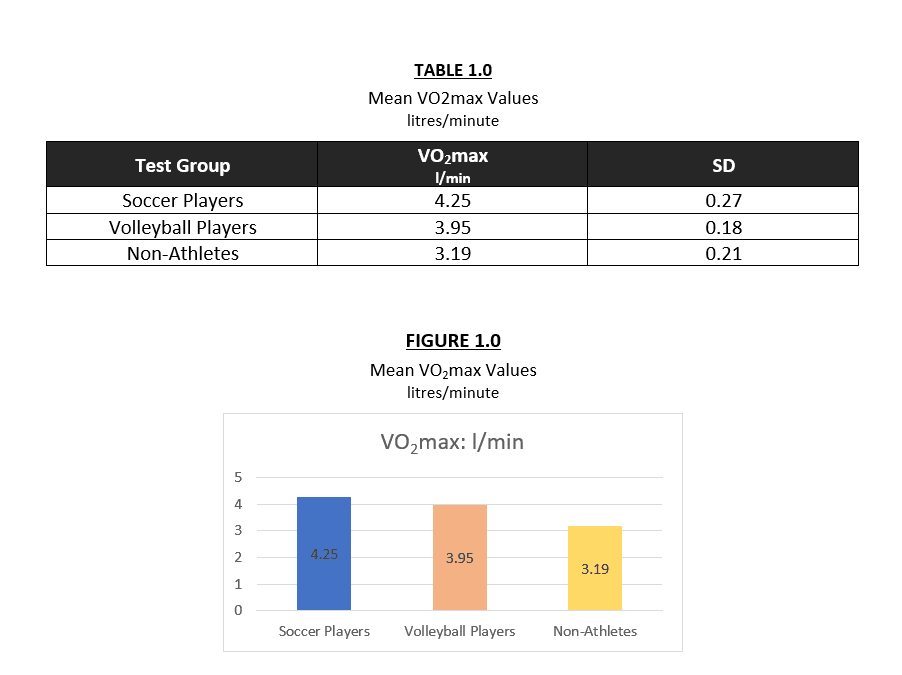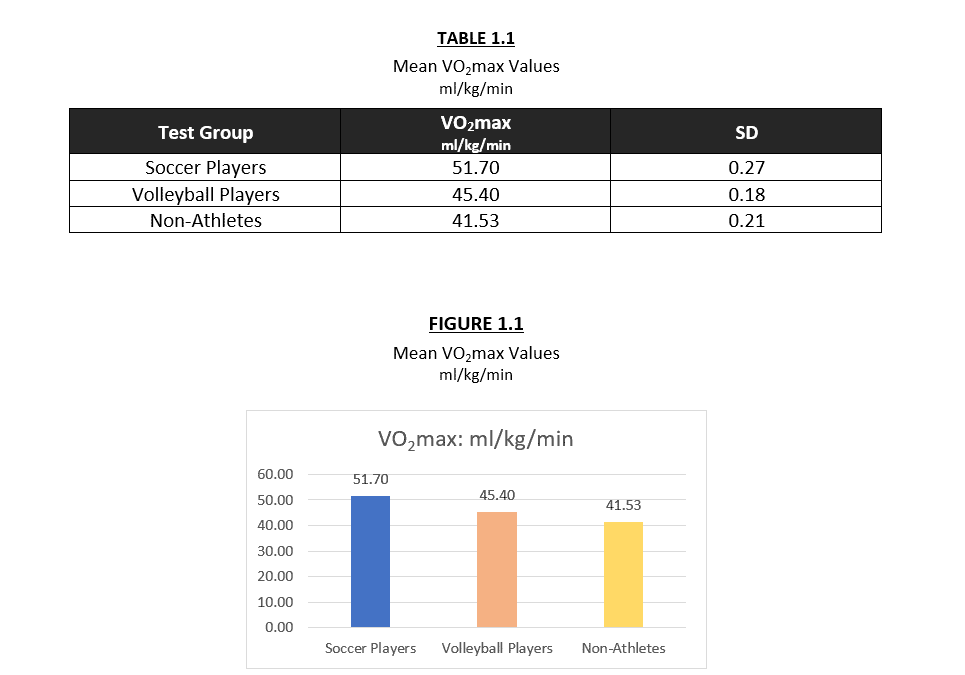Part 5: VO2max – A Determinant of Team Sport Performance
In this fifth article of our Introductory Series, we identify and discuss factors that affect athletic performance in team sports. Athletic Capacities Without question, physical capacity of athletes is an important element of success in every team sport. This involves a massive number of different physiologic parameters, with aerobic capacity playing a significant role. MaximalContinue reading "Part 5: VO2max – A Determinant of Team Sport Performance"

In this fifth article of our Introductory Series, we identify and discuss factors that affect athletic performance in team sports.
Athletic Capacities
Without question, physical capacity of athletes is an important element of success in every team sport. This involves a massive number of different physiologic parameters, with aerobic capacity playing a significant role.
Maximal oxygen uptake (VO2max) has been regarded by a majority of researchers as the best indicator of aerobic capacity. This single measurement indicates the functional capacities of the cardiovascular and respiratory systems, as well as the capacity of tissues to utilize oxygen.
Metabolic Testing for Teams
Measurement of the physical capacity of members of a sports team is one of the most important tasks in assessing the team’s current performance. Through regular assessments, we can more efficiently guide the training process. It is now possible to directly measure maximum oxygen uptake in an athlete’s sport of choice by using the portable VO2 Master Analyzer. This device eliminates the need to test everyone in a lab environment with expensive equipment.
Metabolic Determinants Study: Athletes in Team Sports
In a 2010 study (Ranković), researchers demonstrated the physiologic differences between two team sports, and compared these capacities to inactive subjects.
Material and Methods
The investigation included the determination of absolute and relative VO2max for a total of 66 male test subjects. The study was undertaken at the University of Pristina in Leposavić. The test subjects were divided into two groups of active athletes of different profiles, while the third group of athletes served as control group.
- Semi-professional soccer players (n=22)
- Semi-professional volleyball players (n=18)
- Non-athletes (n=26)
VO2max for all participants was determined by performing the Astrand 6-minute cycle test. Absolute values were expressed in ml/min and in relation to body weight in ml/kg/min.
Results

Table 1.0 and Figure 1.0 display peak values of VO2max. The higher VO2max scores seen among soccer players were statistically significant. In addition, there was also a statistically significant difference between athletes and non-athletes.
As displayed in Table 1.1 and Figure 1.1, a similar ratio of VO2max values was also recorded after the analysis of values expressed in relative units. The best results were obtained again by soccer players with statistically significant differences when compared to the group of volleyball players. This difference underscores the importance of aerobic capacity for elite soccer players.

Discussion
The level of competition now present among elite team sports requires an extraordinary aerobic capacity for each athlete on the field. Aerobic capacity is an integral indicator of the functional capacities of all an athlete’s physical systems involved in supplying, transporting and energizing oxygen transformation. Functional impairment of any link in the physiologic chain can decrease an athlete’s physical capacity.
Insufficient aerobic capacity precludes the maintenance of a high level of aerobic exercise. Sports performance will be negatively affected by this fatigue, especially towards the end of a match. A high level of aerobic capacity is indispensable for achieving success in all team sports. Therefore, the determination of VO2max is of special importance.
The sport of high-level soccer requires sustained performance that intertwines aerobic and anaerobic exercises. The player is thus required to have an efficient system that will support their performance throughout all 90 minutes of the match.
It can be noted that there are statistically significant differences between the volleyball and soccer players. This indicates that the training associated with each sport has led to physiologic changes among the athletes.
The data related to the physiological profile of semi-professional soccer players, show that the average distance made during a match is 8-12 km, with an aerobic/anaerobic ratio of 90%:10%. In another study conducted by Diaz et al, measuring the maximal oxygen uptake of Mexican professional soccer players, obtained the value of 53.8 ml/kg/min.
Furthermore, Wilmore et al investigated two teams from the Norwegian Professional league, and obtained the value of 60 ml/ kg/min. The investigations of Cajasus have shown that the value of VO2max reached 66.4 ml/kg/min in soccer players of the Spanish First League.
The takeaway here is that as we progress to higher performing soccer leagues (from the Mexican league to the Norwegian league to the Spanish league), there was an associated increase in higher VO2max scores.
This assertion is confirmed when we look at another study. It was also determined that soccer players of the Union of Serbia and Montenegro’s First League had higher VO2max values (53.8 vs. 44.8 ml/kg/min) compared to amateur football players.
Conclusion
An investigation into the maximal oxygen uptake provides relevant insight into the health of players of team sports. This can also be used in providing training recommendations and the follow up to gauge an athlete’s response to training. For these reasons, the increase in VO2max values as indicators of physical capability of team sport athletes is indispensable for achieving top sports results.
Taking into consideration the morphological and functional changes as the consequence of the training process, it can be concluded that VO2max values are statistically higher in the groups of team sport athletes compared to the group of non-athletes.
References
G. Ranković et al, University of Pristina (2010)
Diaz, H., Chamari K, Hachana Y, Kaouech F, Jeddi R, Moussa CI, Wisloff U. Endurance training and testing (2005)
Wilmore H.J., Costill, L.D. Anthropometric and physiological predispositions for elite soccer. (2008)
Casajus, J.A.; Seasonal variation in fitness variables in professional soccer players. J. Sports. Med. Phys. Fitness. (2001)
